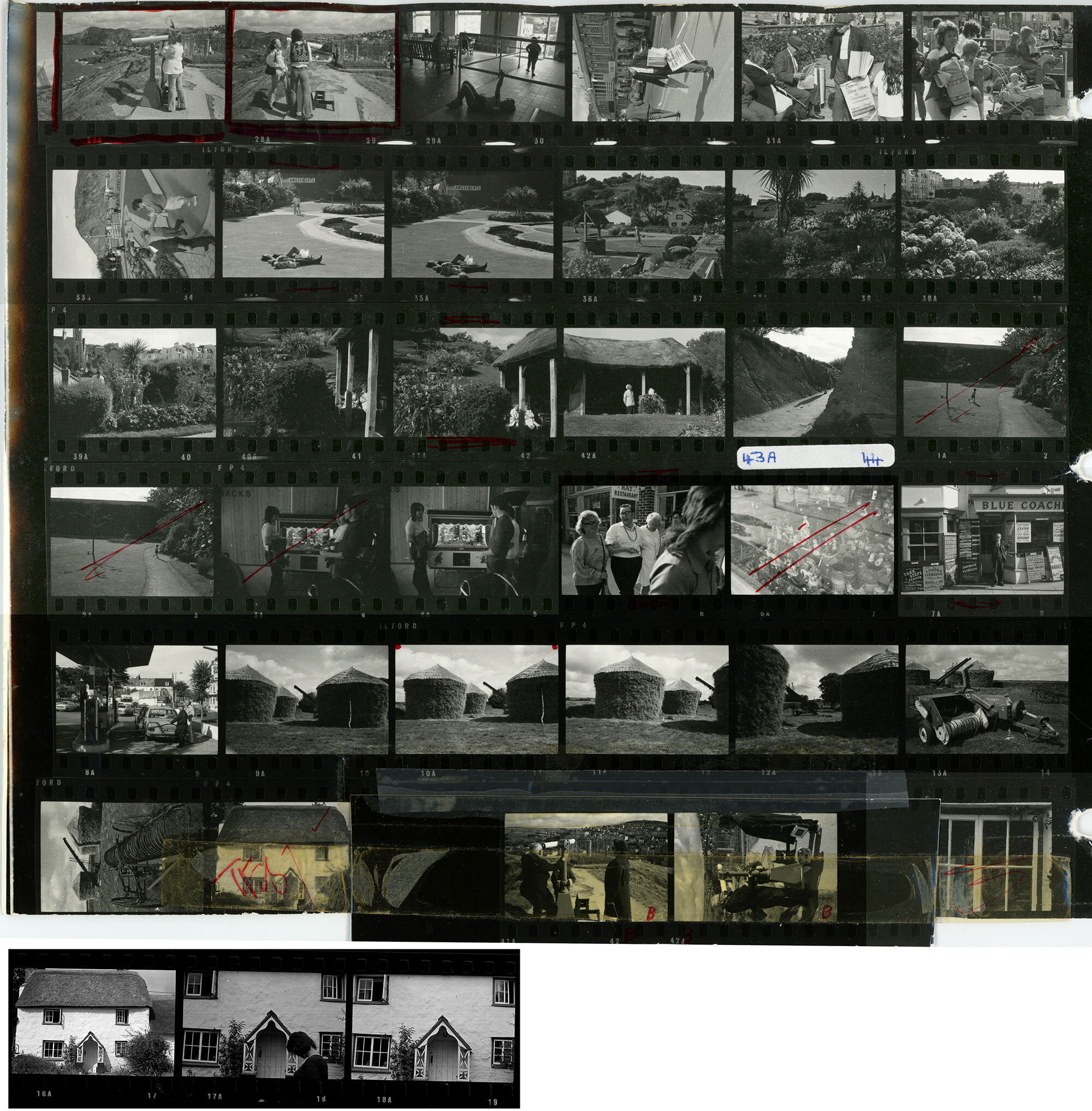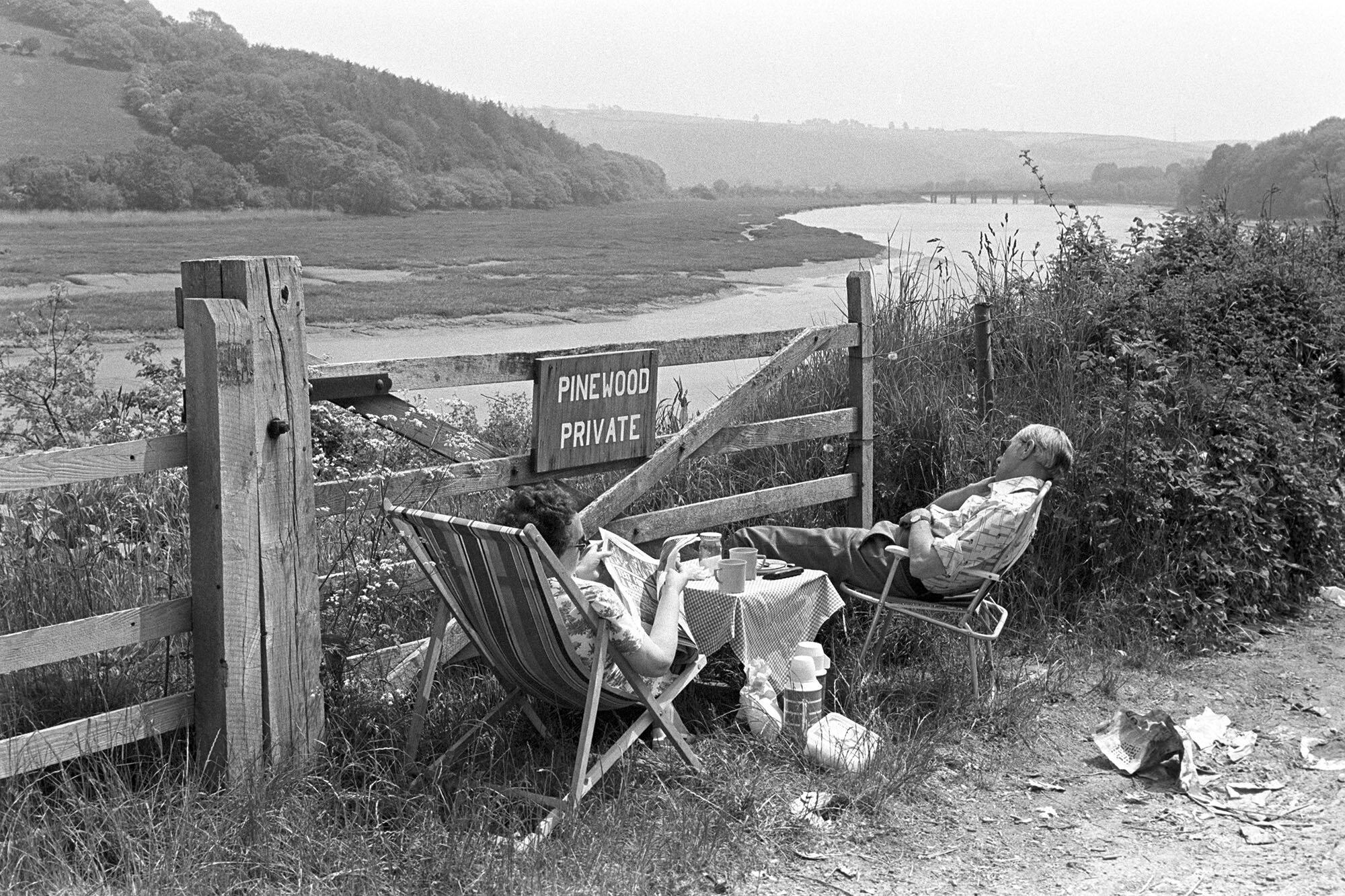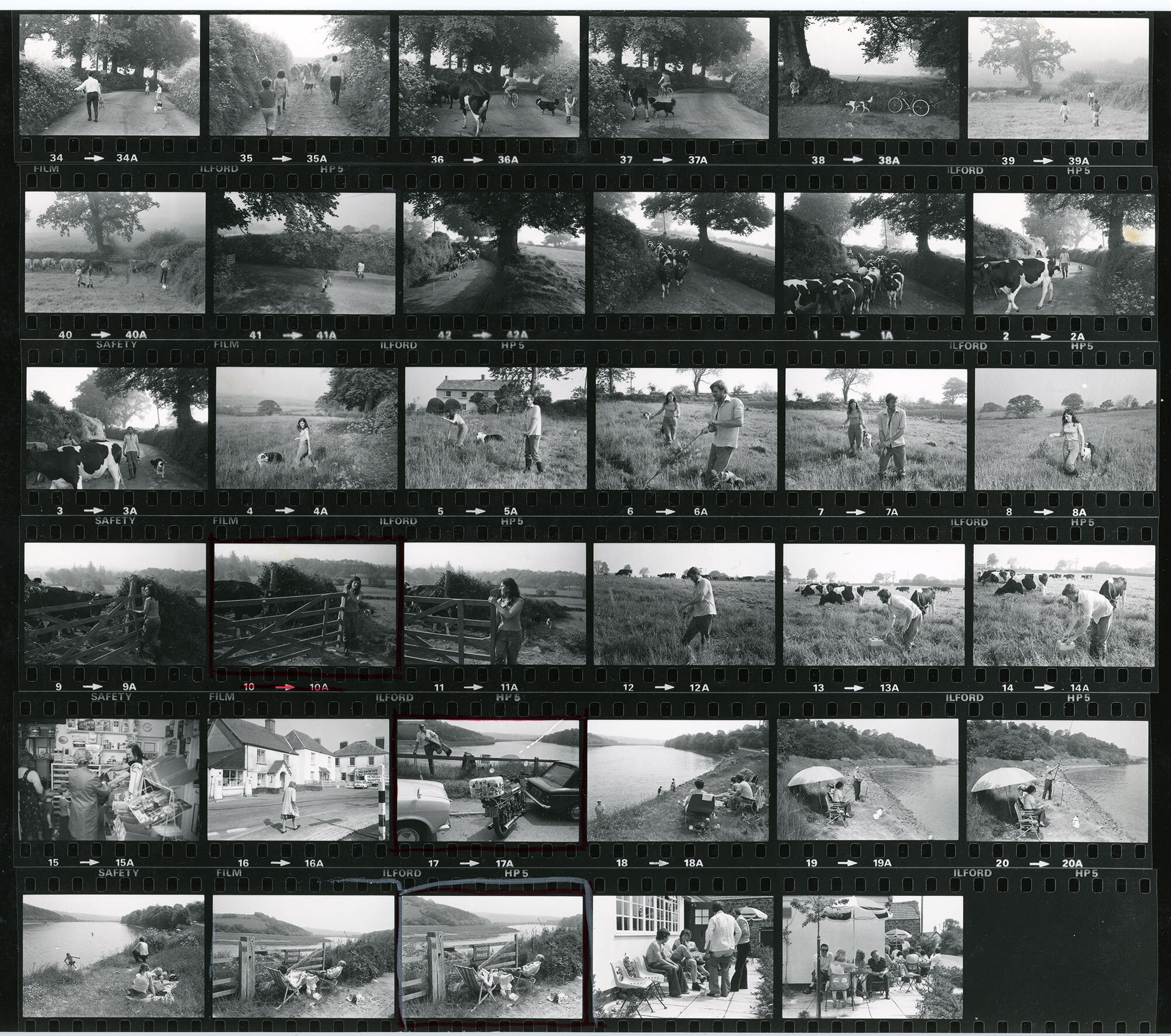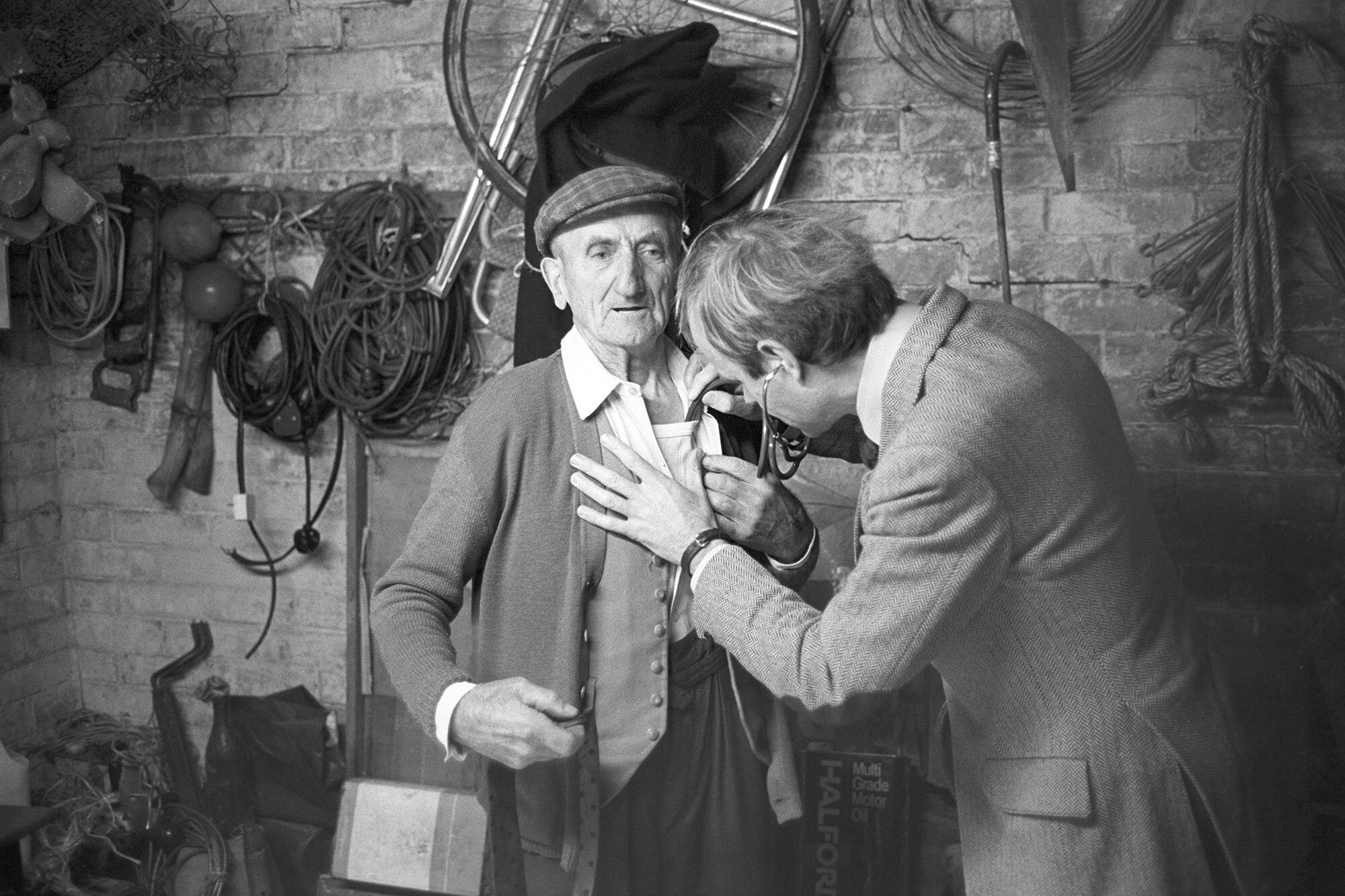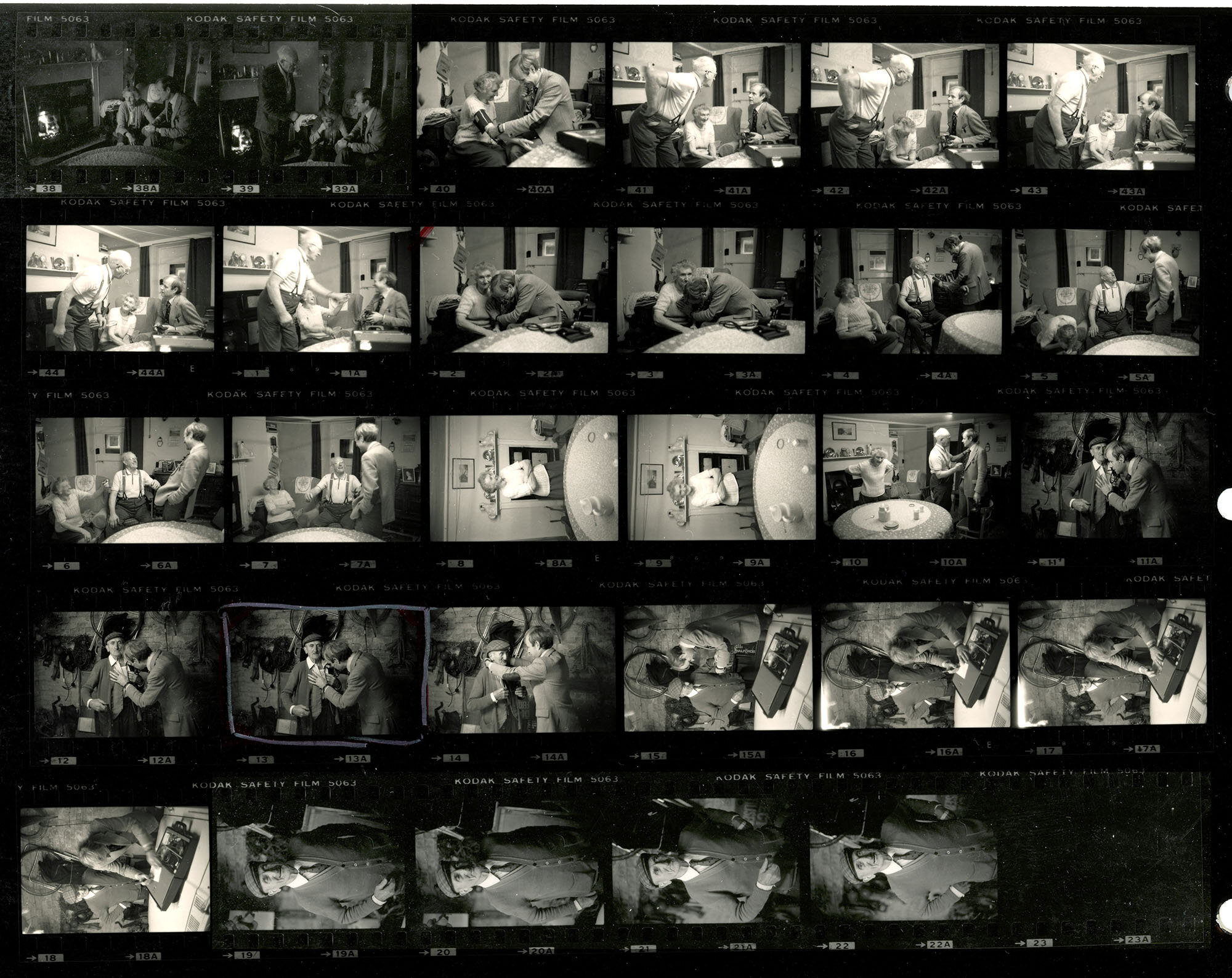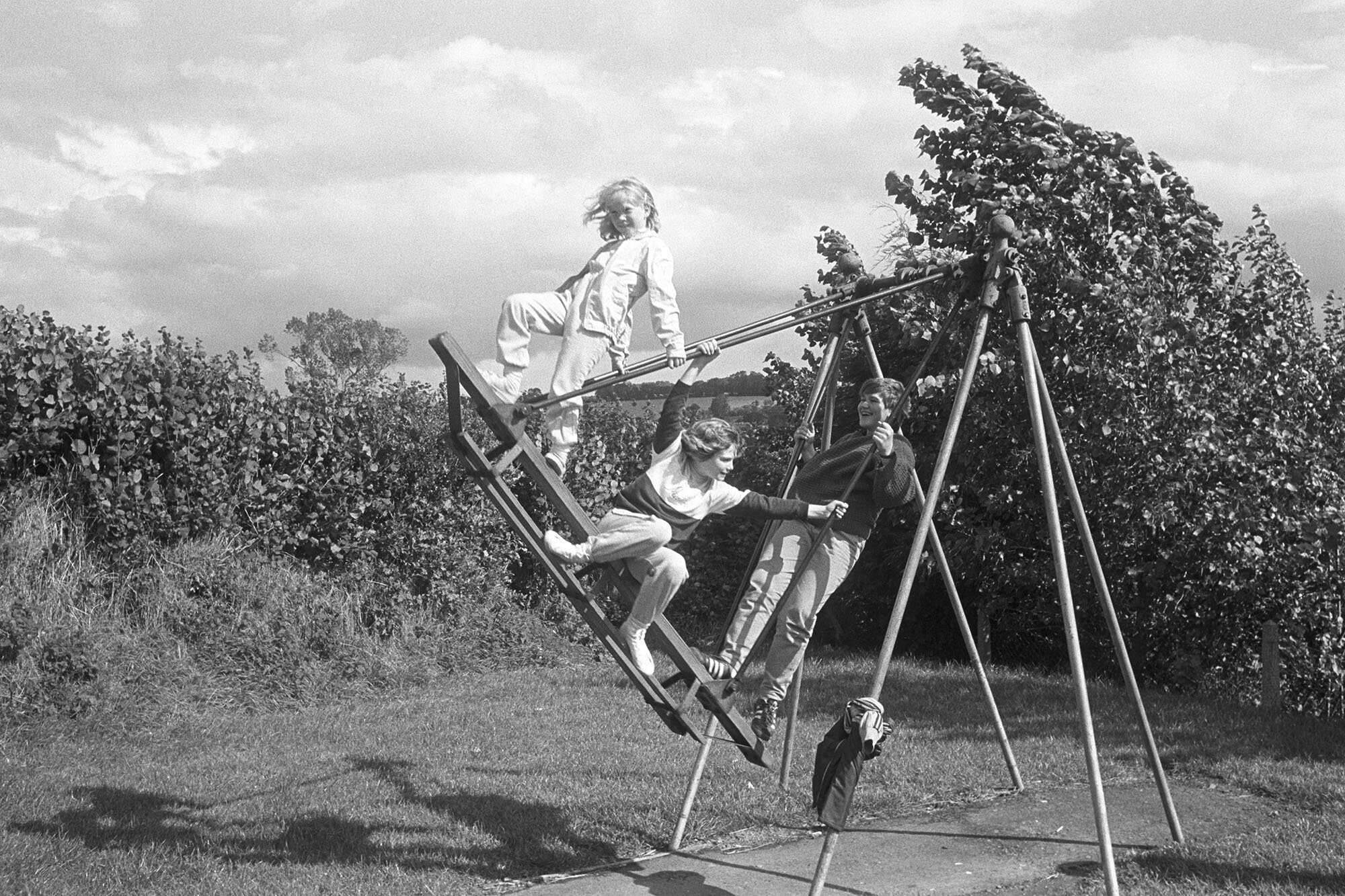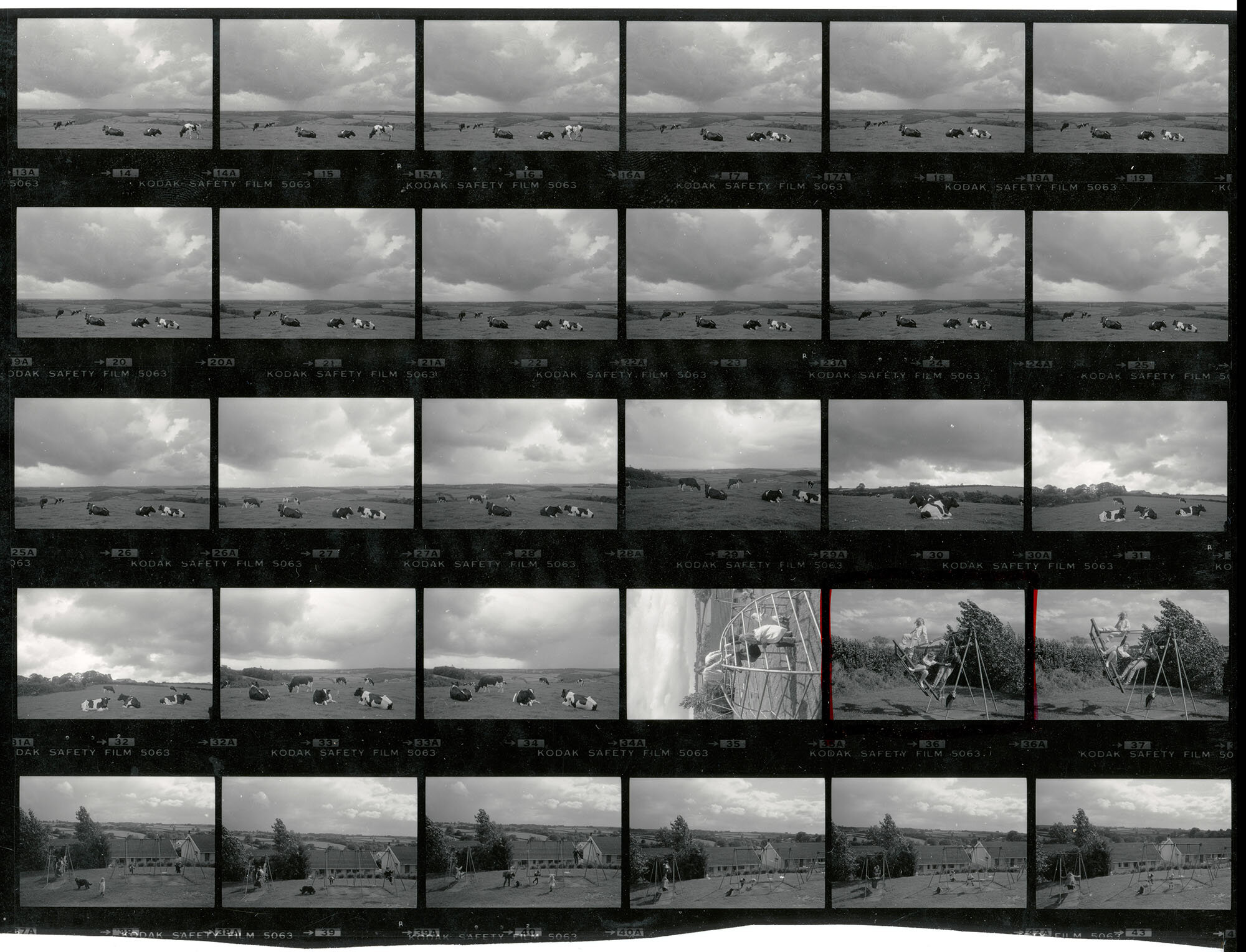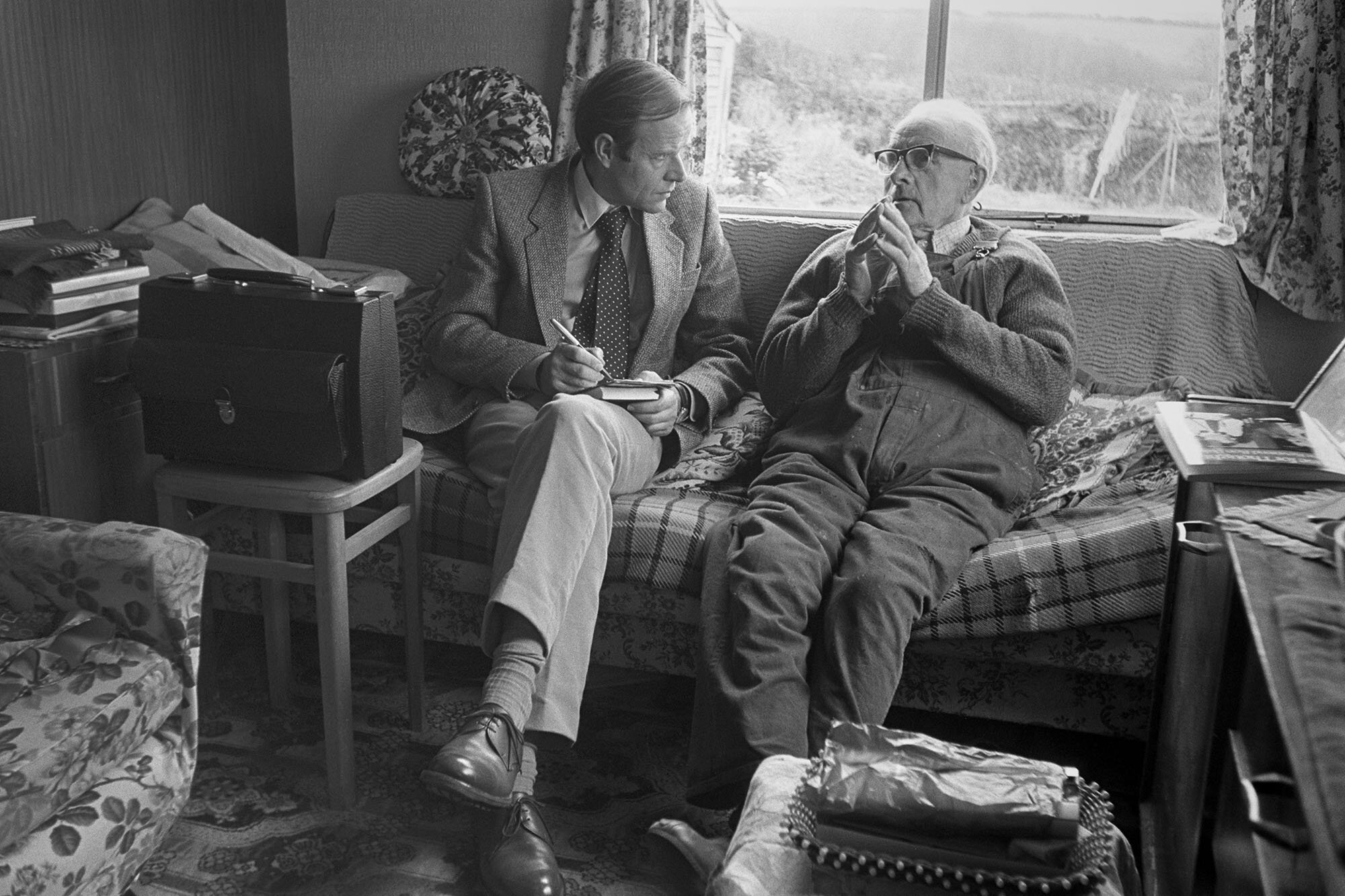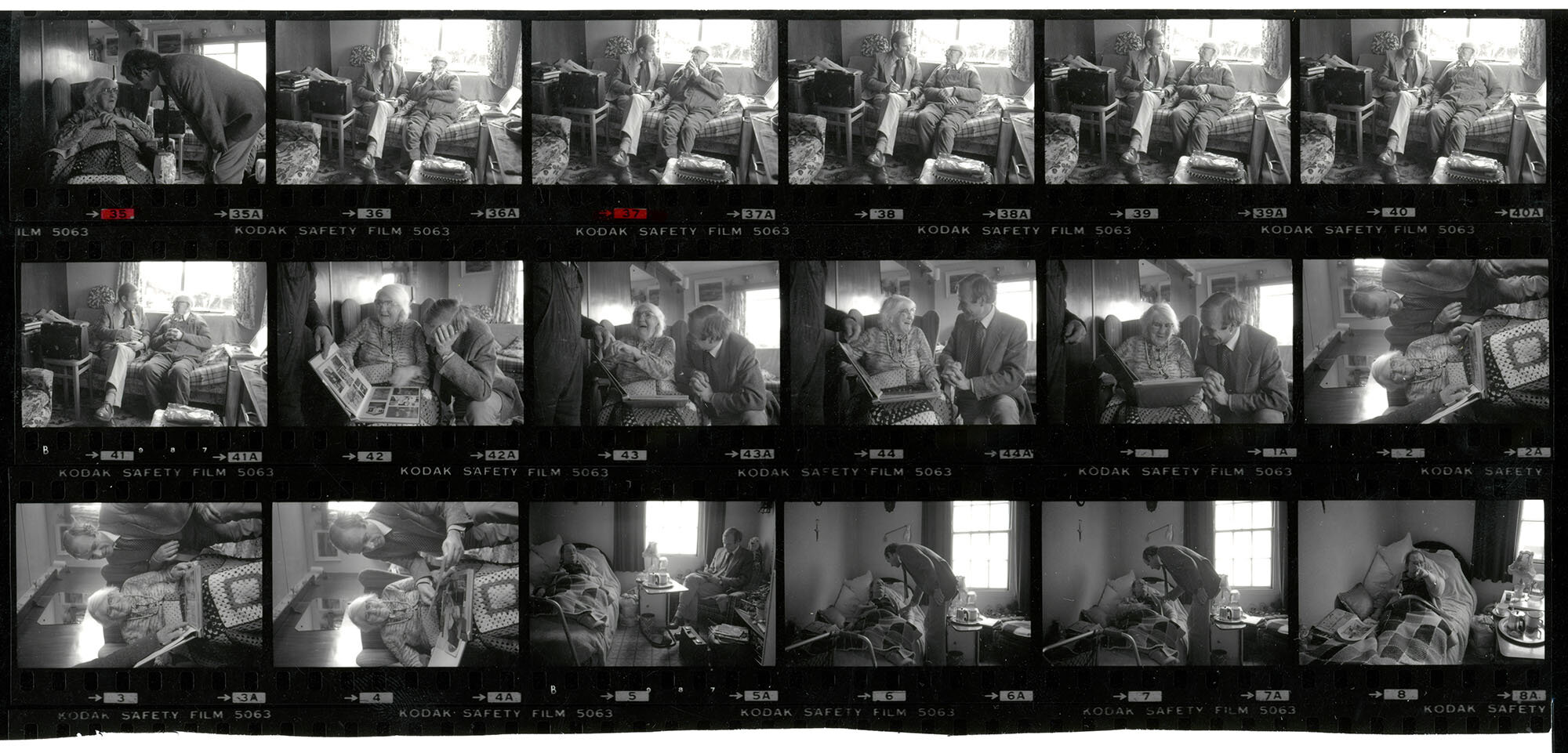Robin Ravilious, James’s wife, wrote for beafordarchive.org about his methods:
“For James, photography was a much more complicated business than it is today. He worked in analogue not digital mode, using rolls of film. He usually took quite a few shots of a subject as insurance, because, unlike today’s photographers, he had no way of assessing what he’d taken until he could get home and develop the film he’d exposed.
When his roll of film had been soaked in chemicals, washed, and hung to dry, it could be cut into short strips so that all the pictures could be seen together. But they were still negatives. They needed to be printed [on photographic paper] … to make the contact sheet. From that he could choose likely-looking images to enlarge, singly, to make bigger prints.
James had trained as an artist. Although composing in a hurry through a tiny viewfinder is very different to composing on a canvas, his best images catch fleeting moments of real life in arrangements of lines and shapes and textures of light that give them the iconic qualities of paintings. As he said, ‘It is mysterious, but if you look at several shots of one scene, there is one that has it – as if there were a little poem in there – but only for a second.’ ”
Some scans of James’s marked-up contact sheets and the images he chose from them are on this page. We hope you’ll find some inspiration as you select from your own photos.
Photographs by James Ravilious © Beaford Arts



